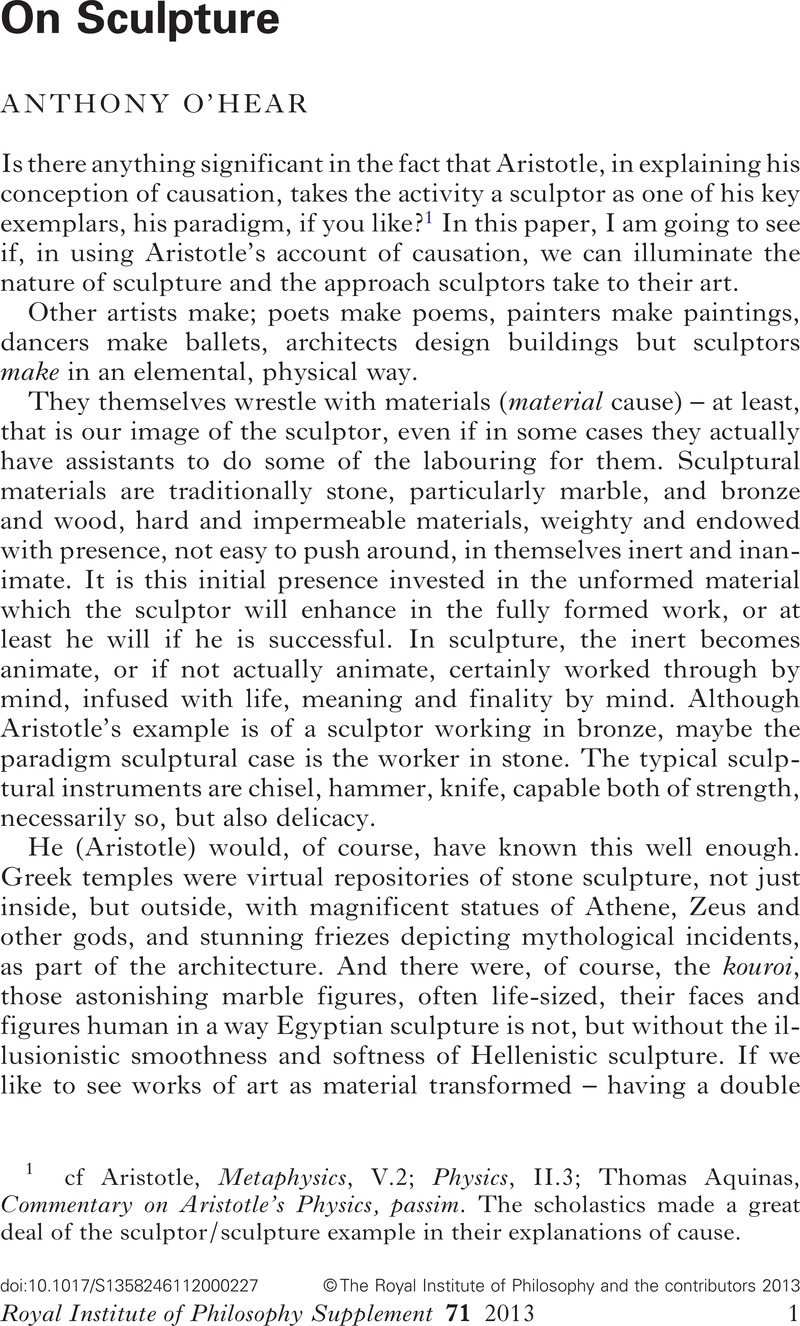No CrossRef data available.
Published online by Cambridge University Press: 11 March 2013

1 cf Aristotle, Metaphysics, V.2; Physics, II.3; Thomas Aquinas, Commentary on Aristotle's Physics, passim. The scholastics made a great deal of the sculptor/sculpture example in their explanations of cause.
2 This quotation and the phrases in the following paragraph are from Ruskin, John's ‘The Nature of then Gothic’, in The Stones of Venice, in The Works of John Ruskin, edited by Cook, E.T. and Wedderburn, A., George Allen, London 1903–12, vol 10, 190Google Scholar.
3 All quotations from Chapter Four of Ruskin's The Bible of Amiens (1880–5), in Ruskin's Work, (loc cit), Vol 33, 147–8 and 169–70.
4 Eduardo Chillida, quoted in Pierre Volboudt, Chillida, (trans. V. Menkes), Harry N. Abrams, New York, 1967, vii–ix.
5 Geoffrey Hill, Scenes From Comus 1.4, Penguin, London, 2005, 4.
6 Epstein, Jacob, Let There Be Sculpture, (Michael Joseph, London, 1942), 154–5Google Scholar.